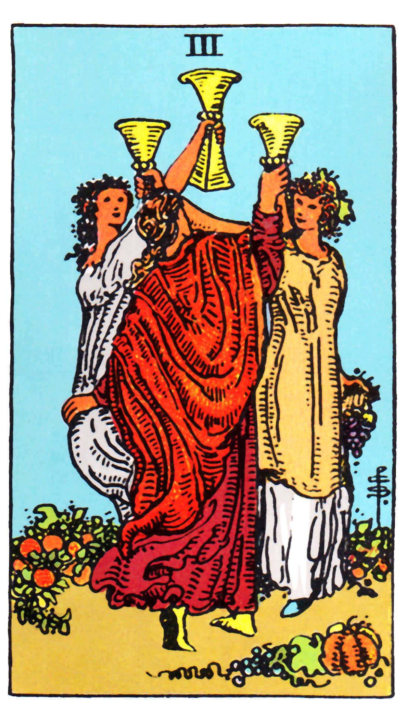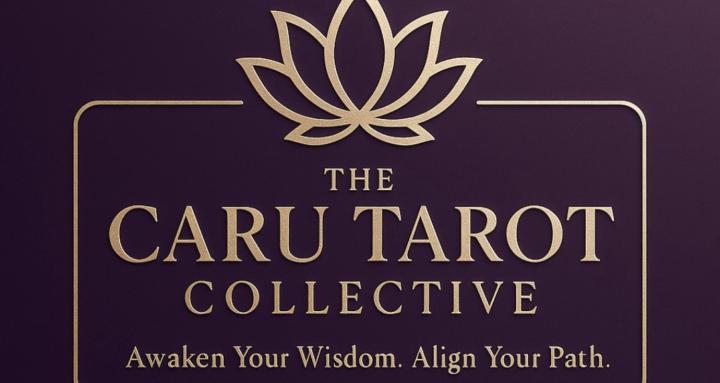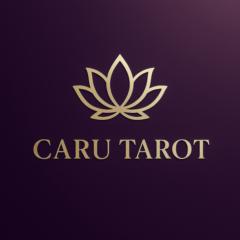
Write something
🔮 What’s Your Tarot Reading Superpower?
Every tarot reader has a unique way of connecting with the cards. Some feel the energy instantly, some tell incredible stories, some decode every tiny symbol, and others shine a light of guidance. This fun quiz will help you discover your Tarot Reading Superpower Archetype and give you tips to make your readings even more magical. How to Play: - Grab a notebook or just track your answers in your head. - Read each question and circle (or note) the answer that feels most true for you. - At the end, tally up your results. - Then scroll down to find your Tarot Archetype and how to strengthen it! The Quiz: 1. When you first flip over a card, what catches your attention most? a) The feeling or vibe it gives me instantly. b) The story or scene unfolding in the imagery. c) The symbols and details hidden in the card. d) The message I sense my querent needs to hear. 2. Imagine you’re reading for a friend. They ask a tough question. How do you respond? a) I let my intuition guide me to the right interpretation. b) I weave the cards into a narrative that mirrors their situation. c) I analyze the symbolism and explain what each detail means. d) I tune in to what would be the most empowering advice for them. 3. Which tarot card do you feel most drawn to? a) The High Priestess – mysteries and intuition. b) The Fool – beginnings and stories waiting to unfold. c) The Magician – symbols and tools of transformation. d) The Star – hope, guidance, and light in the dark. 4. What excites you most about reading tarot? a) Tapping into my psychic senses and gut knowing. b) Storytelling and connecting the cards into a bigger picture. c) Discovering the layers of meaning and secret messages. d) Helping people feel clarity, direction, and reassurance. 5. If your tarot deck could speak, how would it describe you as a reader? a) “You are a seer, always listening to your inner knowing.” b) “You are a bard, weaving stories that awaken truth.” c) “You are a scholar, decoding sacred symbols with precision.”
Tarot Wisdom: The 3 of Cups
The 3 of Cups is the card of connection, celebration, and soul-aligned community. A perfect representation of our community here in The Caru Tarot Collective. It reminds us that joy expands when it’s shared, and that the people we surround ourselves with are mirrors of the energy we’re cultivating. In tarot, this card represents friendship, collaboration, and the beauty of coming together for a common purpose. It’s not just about parties or surface-level fun—it’s about support, encouragement, and knowing you don’t have to walk your journey alone. 💡 Lesson: The 3 of Cups teaches us that success and fulfillment aren’t solo pursuits. Growth is amplified when we join forces, uplift each other, and allow ourselves to receive love and support in return. 🔮 Wisdom Message: Look around you today… who are the people cheering for your dreams? Who makes you feel lighter, more inspired, and more like yourself? Lean into those connections. Celebrate not just the big wins, but the everyday moments of joy, laughter, and encouragement that remind you: you belong here. ✍️ Journal Prompt: Who in your life feels like a true 3 of Cups connection—someone who celebrates your wins, supports your growth, and brings joy into your world? How can you honour or nurture that connection this week?
4
0

Why the Moon Belongs to Cancer in Astrology but Pisces in Tarot
If you’ve ever dived into both astrology and Tarot, you may have noticed something curious: - In astrology, the Moon rules Cancer. - In Tarot, The Moon card is linked to Pisces. So which one is “right”? The answer is both, but for different reasons. Let’s unpack it. 🌙 Astrology: The Moon and Cancer Astrology’s rulerships go back thousands of years to Babylonian, Greek, and Hellenistic traditions. Each planet was assigned to a zodiac sign (or two) based on essential qualities and cosmic order. The Moon rules Cancer because they mirror each other in symbolism: - Nurturing and protective energy - Emotional depth and sensitivity - Cycles and rhythms (lunar phases, ocean tides, fertility) - Roots, family, and home In astrology, the Moon is the inner world—our needs, feelings, and instinctual responses. Cancer embodies that same archetype, which is why the Moon belongs there. 🎴 Tarot: The Moon and Pisces The Tarot is a much younger system. While playing cards go back to the 14th century, the astrological correspondences most readers use today were mapped in the 19th century by the Hermetic Order of the Golden Dawn. In this system, the Major Arcana were aligned with astrology, numerology, and the Kabbalistic Tree of Life. The Moon (card XVIII) was paired with Pisces, not Cancer. Why Pisces? Because the symbolism fits: - Dreams, illusions, and spiritual veils - Mysticism and hidden truths - Confusion, uncertainty, and imagination - Sensitivity and receptivity to unseen worlds Pisces is the dreamer and mystic of the zodiac, the sign where reality and imagination blur. That makes it the perfect match for the dreamlike, mysterious imagery of The Moon card. ✨ Why the Difference? Here’s the key: astrology and Tarot weren’t originally designed as one unified system. They overlap now, but they grew from different traditions. 1. Astrology’s Moon = Cancer→ Based on rulerships established thousands of years ago in classical astrology. 2. Tarot’s Moon = Pisces→ A much later esoteric overlay, chosen by the Golden Dawn to emphasize illusion, dreams, and mysticism.
2
0
Unlocking Your Inner Wisdom: The Magic of Tarot
Imagine having a magical tool that helps you tap into your intuition, uncover hidden truths, and guide you toward a brighter future. That’s what tarot is all about! Tarot is an ancient practice that uses a deck of cards to reveal insights and guidance, helping you align your choices with your deepest desires and life purpose. WHAT IS TAROT? Tarot is a deck of 78 cards, each with unique symbols, imagery, and meanings. These cards are divided into two main groups: the Major Arcana and the Minor Arcana. The Major Arcana consists of 22 cards that represent significant life events and spiritual lessons. The Minor Arcana is made up of 56 cards that delve into day-to-day experiences and challenges. Each card tells a story and offers a perspective, making tarot a versatile tool for self-reflection and growth. Whether you’re seeking answers to specific questions or simply looking for a deeper understanding of your life path, tarot has got your back. HOW CAN TAROT HELP ON YOUR SPIRITUAL JOURNEY? 1. Tuning into Intuition: Tarot encourages you to listen to your inner voice. The images and symbols on the cards can trigger intuitive insights, helping you to see 2. situations more clearly and from different angles. 3. Connecting with Inner Wisdom: Each tarot reading is a conversation with your higher self. The cards reflect your subconscious thoughts and feelings, providing a mirror to your inner world. This connection can help you make decisions that are more aligned with your true self. 4. Clarifying Life Purpose: By exploring the themes and messages in the cards, you can gain a deeper understanding of your life purpose. Tarot can illuminate your passions, strengths, and the areas where you might need to grow, guiding you toward a more fulfilling path. 5. Making Aligned Choices: With tarot, you can weigh your options and see potential outcomes. This foresight helps you make choices that resonate with your core values and goals, leading to a more authentic and satisfying life. 6. Empowering Personal Growth: Tarot readings can highlight areas of your life that need attention or healing. By addressing these issues, you can overcome obstacles and embrace personal growth, becoming the best version of yourself.
6
0
(Audio) Why You Shouldn’t Ask the Tarot Yes or No Questions
When it comes to tarot, one of the biggest mistakes beginners make is asking questions that can only be answered with a simple yes or no. While it might feel tempting to cut straight to the chase “Will I get this job?” “Does this person love me?” “Should I move?” These types of questions limit the magic of tarot and often leave you feeling stuck with a flat answer. Here’s why yes/no questions don’t work well with tarot: ✨ Tarot is a mirror, not a magic 8-ball. The cards reflect your energy, choices, and potential paths. Life isn’t fixed, it’s shaped by your actions. A yes/no question oversimplifies the complexity of your journey. ✨ It limits your guidance. If you ask “Will I get the job?” and pull a card, you might get “The Tower.” Does that mean no? Or does it mean there’s change ahead that could redirect you to something even better? A single word answer can’t capture the deeper wisdom tarot is trying to show you. ✨ It shuts down your power. Yes/no questions place all the power outside of you, as if fate is sealed. Tarot is about empowerment—it helps you see what influences are at play and how you can shift your choices to align with your highest path. So, what should you ask instead? Focus on open-ended questions that explore the what, how, when, and where of your situation. This invites richer answers and actionable insights. ✅ Instead of: “Will I get the job?” Try: “What steps can I take to stand out in my job search?” ✅ Instead of: “Does this person love me?” Try: “What energy surrounds this connection, and how can I show up in the healthiest way?” ✅ Instead of: “Should I move?” Try: “What do I need to know about moving, and how would each option support my growth?” When you shift your questions from closed to open, you open the door to deeper wisdom. Tarot isn’t here to trap you in fate—it’s here to illuminate your path so you can walk it with clarity and confidence.
3
0
1-9 of 9
powered by

skool.com/the-caru-code-2628
The Caru Tarot Collective is a space for spiritual seekers to deepen self-trust, sharpen intuition, and rise with clarity and confidence.
Suggested communities
Powered by
